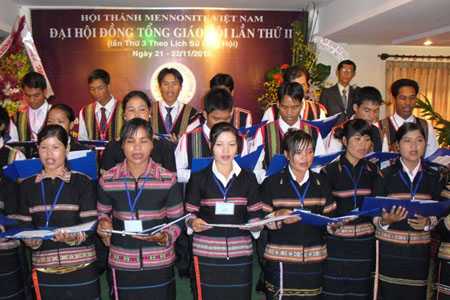During 1954-1975, apart from the CMA and the Vietnam General Confederation of Evangelical Churches (Southern Region), there were many other Protestant organizations and sects which set up foundations in South Vietnam...
During 1954-1975, apart from the CMA and the Vietnam General Confederation of Evangelical Churches (Southern Region), there were many other Protestant organizations and sects which set up foundations in South Vietnam. They were mainly from America and included the Adventists, Baptists, Pentecostals, Presbyterians, Jehovah's Witnesses, Disciples of Christ, and Mennonites. After the liberation of the South of Vietnam, the activities of these sects came to a standstill. However, when Vietnam entered the renovation process, these Protestant organizations and sects started to renew their activities. Other Protestant organizations were newly created, imported into the country or created out of old organizations. Here are some typical Protestant organizations and sects which have had a big influence in Vietnam.
Seventh-day Adventist Church
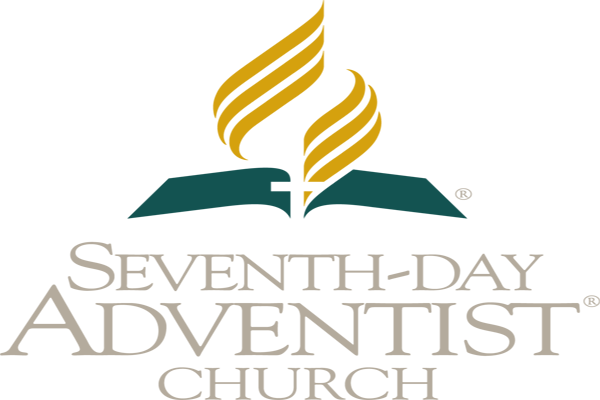
The Seventh-day Adventist Church ranks second in terms of the commencement of missionary activities, numbers of followers and missionaries, and the range of activities. Since 1951, the Seventh-day Adventist Church in the United States of America had sent missionaries, including R. M. Milne, to Vietnam. In 1927, it sent two other missionaries-R. H. Wentland and F. L. Pickett to Sai Gon to learn Vietnamese and carry out missionary work. The Seventh-day Adventist Church in Sai Gon was officially founded in December 1929 and included Vietnamese, Chinese and French followers. In 1930, the first chapel of the Adventists was built in Tri Ton, Chau Doc.
In 1932, the Seven-day Adventist received permission from the Governor of South Vietnam to preach and deliver religious materials. As a result, the Adventists were able to get off to a good start, and they established foundations in various regions including Long Xuyen, Da Nang, My Duc, Vietnam and Di Linh. Around 1937, the Seventh-day Adventist Church in Vietnam was established and named Sabbath. It was headed by F.L. Pickett. Then came many religious and social organizations such as the Gia Dinh Theological Bible School (1939), Thoi Trieu Printing House (1939), Phu Nhuan Church-the headquarter of the Seventh-day Adventist Church in Vietnam, two primary schools, a medical station in Can Tho, and Sabbath schools in Di Linh and Vietnam. After Tran Xuan Phan and Le Van Ngo-two pastors from the Vietnam General Confederation of Evangelical Churches-joined the Adventists, the Seventh-day Adventist Church in Vietnam received a great number of followers.
The Seventh-day Adventist Church in Vietnam was in its heyday during 1954-1975. In 1975, it had more than 30,000 followers, 35 pastors and missionaries, and 42 chapters including three in the Co-ho and Ha-lang communities in Da Lat. In terms of evangelization, it had a Bible school which specialized in training pastors and missionaries, Sabbath schools in its chapters, and a missionary program titled “The Voice of Hope" broadcast by ten radio stations in such cities as Sai Gon, Nha Trang, Da Lat, Da Nang and Hue. It also had a printing house which was equipped with modern facilities and published great quantities of evangelical materials annually. Besides, the Seventh-dav Adventist Church in Vietnam had many other cultural and social foundations such as a branch of the Southeast Asia University, a Christian high school in Sai Gon, eighteen primary and high schools, a well-equipped hospital with about forty sickbeds, and twenty orphanages.
In terms of organization, after 1954, the Seventh-day Adventist Church in Vietnam was officially named the Seventh-day Adventist Church of Vietnam and became part of the Southeast Asia Alliance in the global structure of the Adventists. The Seventh-day Adventist Church of Vietnam was led by a managing committee which includes a chairman, a manager, a secretary and eleven members in charge of professional aspects.
Noticeably, all the key positions of the Church were held by foreign clergymen-this troubled not a few Vietnamese pastors, missionaries and followers in the South before 1975. From its establishment to 1975, the Vietnam Seventh-day Adventist Church was chaired in turn by the following clergymen: Pastor Fred Lloyd Pickett (1937-1938), Pastor R. Howlett (1938- 1942), Pastor R. H. Wentland (1942-1945), Pastor Robert Bent (1945-1948), Pastor E. H. Wallace (1948-1956), Pastor L. G. Storz (1956-1960), Pastor R. H. Wentland (1960-1962), Pastor R. Tilstra (1962-1963), Pastor W. A. Burton (1963-1965), Pastor R. E. Neall (1965-1967), Pastor J. Bretch (1967-1969), Pastor Bresley (1969-1972) and Pastor R. H. Wentland (1972-1975).
In 1955, the Seventh-Day Adventist Welfare Service (SAWS) went to the South for humane assistance activities as a support for missionary work. In 1956, it was renamed the Adventist Development and Relief Agency (ADRA) and continued its operation until 1975 under the management of an American nationality holder named Dennis Tidwell.
After the liberation of the South of Vietnam (1975), like those of many other Protestant organizations and sects, the foreign clergymen of the Adventist Church in South Vietnam returned to their countries, and most of the Vietnamese pastors and missionaries whose had relations with the old regime went overseas. The rest of the Adventist Church in South Vietnam appointed Pastor Le Cong Giao to hold the position of the Chairman. The congress of the Seventh-day Adventist Church of Vietnam held in 1976 elected Nguyen Xuan Son to replace Pastor Le Cong Giao.
In the implementation of the Ordinance on Beliefs and Religions dated December 4, 2008, and on behalf of the Vietnamese Prime Minister, the Vietnam Government Committee for Religious Affairs promulgated the Resolution 235/QD-TGCP to acknowledge the organization of the Seventh- day Adventist Church of Vietnam, which was headed by Pastor Tran Cong Tan and headquartered at number 244 Phan Dang Luu Road, Ho Chi Minh City. The motto of the Seventh-day Adventist Church of Vietnam in the new period is: "Worship the eternal Trinity, love fellow human beings, respect God, love Him and serve the Fatherland."
According to the statistics of the Vietnam Government Committee for Religious Affairs, in 2006, the Seventh-day Adventist Church of Vietnam had over 20,000 followers and 23 pastors in 25 provinces and cities, mostly in the South.
Vietnam Christian Mission
In 1956, due to conflicts with the CMA and especially the finding of a new financial source from the Worldwide Evangelization Crusade (WEC)—a professional missionary organization established in England in the late nineteenth century, Pastor Gordon Smith and some other pastors and missionaries such as Pastor Hoang Trong Nhat (Pastor Hoang Trong Thua's son), Pastor Nguyen Van Lich and Pastor Do Phuong left the Vietnam General Confederation of Evangelical Churches (Southern Region) and established a new organization called Vietnam Christian Mission.
In terms of creeds, ritual regulations, religious practices and organization, the Vietnam Christian Mission is not different from the CMA and the Vietnam General Confederation of Evangelical Churches. However, its missionary activities are directed toward the ethnic minority communities in the Northern part of the Central Highlands and in the Central coastal area — whose residential and geographical features were quite familiar to Gordon Smith.
After establishing the headquarter of the Vietnam Christian Mission in Da Nang, Gordon Smith and Pastor Hoang Trong opened the Bible School in Da Nang to train missionaries who belonged to different ethnic minority groups for the purpose of evangelizing Protestantism to ethnic minority communities. During 1960-1975, the Vietnam Christian Mission carried out its activities mainly in Da Nang, Quang Nam, Quang Ngai, Quy Nhon, Kon Tum and Pleiku.
From its birth, the Vietnam Christian Mission had received a lot of support from the WEC. In 1960, the WEC had as many as fourteen clergymen in the South. These clergymen came from different countries and territories such as Britain, Germany, Australia and Hong Kong. In 1962, the WEC helped the Vietnam Christian Mission to build an orphanage in My Khe and a leprosy hospital called Happy Heaven in Kon Turn. In 1968, instead of the WEC, the United World Mission (UWM), which was headquartered in Florida, America, offered support to the Vietnam Christian Mission.
With the support of the WEC and UWM, the Vietnam Christian Mission increased the number of its followers. In 1973, it had 16,350 followers (including 11,500 ethnic minority people and 4,850 Kinh people), 16 pastors, 18 missionaries and trainee missionaries, 35 chapters (including 17 ethnic minority chapters),11 foreign clergymen (including 6 Americans, 3 Britons and 2 Swiss) and 20 cultural and social bases.
After 1975, due to the loss of support from international organizations foreign pastors left Vietnam and the heavy material damage caused by the war, the Vietnam Christian Mission's activities came to a halt. This resulted in the number of its congregation falling as its followers dispersed, with many either going abroad or merely continuing with their religion in the privacy of their homes.
With the renewal of the country, the Vietnam Christian Mission was able to restore its activities. The statistics of the Vietnam Government Committee for Religious Affairs show that in 2006, the Vietnam Christian Mission had more than 21,000 followers including 200 pastors, missionaries and leaders of congregations in 14 provinces and cities in the Central region and in the Northern part of the Central Highlands. More than 60 percents of these followers and congregations were located in Kon Tum Province alone.
In the implementation of the Ordinance on Beliefs and Religions and on behalf of the Vietnamese Prime Minister, on October 22, 2007, the Vietnam Government Committee for Religious Affairs issued the Resolution 175/2007/QD-TGCP to officially acknowledge the organization of the Vietnam Christian Mission, which was then headed by Pastor Nguyen Toi and headquartered at K7/20 Ly Tu Trong Road, Hai Chau District, Da Nang. The motto of the Vietnam Christian Mission in the new period is: "Spread the name of Jesus Christ to everyone in order to establish the Church to worship God and love fellow human beings."
Baptist Church
The Baptist Church began preaching in Vietnam as part of the Southern Baptist Convention (the United States of America). In November 1959, Pastor H. p. Hayes and his wife arrived in Sai Gon and started their missionary work. In 1962, the first Baptist Church was established on Cong Ly Street, Sai Gon, and called Grace Baptist. Although it had a strong potential, it did not have many missionary activities.
From 1962 to 1975, there was a succession of thirteen Baptist pastors, accompanied by wives, traveling to South Vietnam for evangelization. However, they mainly carried out missionary work in cities like Sai Gon, Nha Trang, Da Lat and Da Nang. In 1975, the Baptist Church had a total of 16 chapters with approximately 10,000 followers; 9 Vietnamese pastors and missionaries; and several religious and social establishments such as the Theological Institute, the Baptist Social Agency, and the Children's Center.
Each chapter of the Baptist Church had great self-control, so they had little interest in the establishment of a general church. One could argue that the Baptist Church in Vietnam was more akin to an alliance than a religious church.
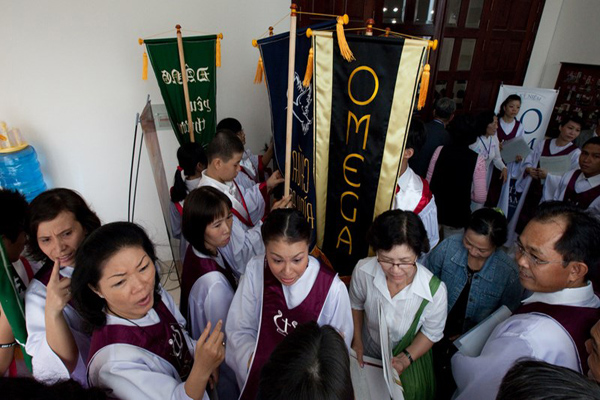
For the last ten years, apart from the Grace Baptist Church and congregations that originated from the Southern Baptist Convention in the United States of America, there have appeared many other Baptist congregations in Vietnam such as the Christ Baptist Church, Independence Baptist Church, Vietnam Baptist Church, and Alliance Baptist Church. It was estimated by the Vietnam Government Committee for Religious Affairs that in 2006, the Baptist Church in Vietnam had more than 21,000 followers, including about 2,000 followers belonging to the Viet Baptist Church (Grace-Southern Region) located in thirteen cities and provinces and approximately 19,000 followers belonging to the Vietnam Baptist Church (Southern Region) located in forty-two cities and provinces.
In the implementation of the Ordinance on Beliefs and Religions and on behalf of the Vietnamese Prime Minister, on May 7,2008, the Vietnam Government Committee for Religious Affairs issued the Resolution 109/QD-TGCP to officially acknowledge the organization of the Vietnam General Baptist Church (Grace-Southern Region), which was then headed by Pastor Nguyen Chanh and headquartered at 161 Nguyen Van Troi Road, Ho Chi Minh City. The motto of the Vietnam General Baptist Church (Grace-Southern Region) is: "Worship theTrinity; love others with all our heart, soul and wisdom as taught by God; deeply respect God; and love fellow human beings. Live and act for social progress, identify ourselves with the nation and unite together for building a prosperous country."
On behalf of the Vietnamese Prime Minister, on October 3, 2008, the Vietnam Government Committee for Religious Affairs promulgated the Resolution 199/QD-TGCP to officially acknowledge the organization of the Vietnam Baptist Church (Southern Region), which was then headed by Pastor Nguyen Thong and headquartered at 334/104/1 Chu Van An Road, Ho Chi Minh City. The Vietnam Baptist Church (Southern Region) raised the motto in the new stage as follows: "Respect God, love Him, worship the Trinity, follow God's teachings in the Bible, spread the Gospel, unite together to build the Church, live the Gospel, serve Christ, serve the Fatherland, have a strong attachment to the nation and obey the State laws."
Pentecostalism
In 1957, a pastor of the Assemblies of God (AG), a Pentecostal organization, arrived in Sai Gon to investigate the situation and prepare for missionary work here. However, it was not until 1970 that Pentecostal priests started missionary work here. The first Pentecostal priests were Mr. and Mrs. Don Warren.
The Pentecostal missionary activities were mainly concerned with charity work such as helping orphans and drug addicts and providing the disabled with vocational training. The first Pentecostal foundations were at 119 Nguyen Hue Road (Sai Gon), 3 Nguyen Van Thoai Road (Sai Gon) and 59 Le Van Ty (Vung Tau).
On June 23,1973, the Home Office of the Sai Gon government issued Resolution 326/BNV/KS/14-B that allowed Pentecostal followers to carry out missionary work and set up a foundation at number 213 Tu Do Road (Sai Gon). Accordingly, Pentecostalism increased the scale of its missionary work by opening Bible schools at number 12 Le Loi Road (Vung Tau) and at number 271 Nguyen Minh Chieu (Sai Gon). However, the initial results were not as good as they had expected. In early 1975, Pentecostalism had only 500 followers, 9 foreign pastors (3 Americans, 2 Koreans, 3 Filipinos and 1 Swede) and 4 Vietnamese pastors.
After 1975, the foreign pastors returned to their countries; most of the Vietnamese pastors and missionaries evacuated. As a result, Pentecostal activities almost came to a halt. In the early 1990s, Pentecostalism started to restore its activities and has experienced different names, such as the Assemblies of God, the Whole Evangelical Church, the Faith Evangelical Church, the Evangelical Church of Missionary Alliance, Grace-Hope Evangelical Church and Agape Evangelical Church.
In 2008, it was estimated that Pentecostalism had 25,000 followers and 350 congregations in three regions. About 80 percent of them belonged to the Pentecostal Evangelical Church. On September 24, 2009, the Vietnam Government Committee for Religious Affairs granted work permit to the Assemblies of God of Vietnam headed by Pastor Duong Thanh Lam. The motto of the Assemblies of God of Vietnam is: "Live on God's words, serve others and serve the country."
Mennonites
The Mennonites entered Vietnam in 1954 under the title of a social relief organization called Mennonite Central Committee (MMC). Three years later, in 1957, clergymen from the Eastern Mennonite Board of Mission (EMBM) directly under the Mennonite Church such as Jalles Stauffer, Arlene Stauffer, Everett Metzler and Nazaret Metzler began evangelization. Their first task was to learn Vietnamese. Later, with the aid of the MCC and Vietnam General Confederation of Evangelical Churches (Southern Region), these clergymen managed to set up their first missionary foundations such as the Bible preaching house in Dakao (Sai Gon) and the Bible class in Phan Van Tri Road (Gia Dinh). During 1962-1963, many other clergymen from EMBM such as James Metzler, Luke Martin, Rachel Metzler, and Mary, Donald and Doris Sensenig went to the South. Mennonite evangelical foundations were expanded to many other areas like Can Tho, Da Nang, Nha Trang and Tay Nguyen. The EMBM's missionary activities were conducted in combination with MCC's charity work.
Despite of their efforts which were enforced by the support of MCC and Vietnam General Confederation of Evangelical Churches (Southern Region), the Mennonites did not have an impressive conversion rate. This could have been due to lifestyle differences. By 1975, the Mennonites in South Vietnam had approximately 500 followers and 4 foundations. Three of these foundations were located in Sai Gon (specifically at 336 Phan Thanh Gian Road, 17 Ngo Duc Ke Road and 13 Van Kiep Road in Binh Thanh District); the other was established in Can Tho.
The period from 1954-1975 witnessed a lot of charity activities carried out by the Mennonites, most of which were directed by MCC in association with medical bases of the Vietnam General Confederation of Evangelical Churches (Southern Region) in Sai Gon, Pleiku, Ban Me Thuot, Da Lat and Nha Trang. According to Nguyen Thi Oanh in the monograph entitled “The U.S. Charity Relief in South Vietnam" published by the Ho Chi Minh City Committee for Social Sciences in December 1977, the Mennonites' charity activities were based on religious morals. The fact that the Mennonites did not attempt to exploit Vietnam's political instability was what helped their foundations to prosper. Since 1973, the Mennonites had expanded relief efforts to the North. However, while the Mennonites provided regular relief in the South where their representative office was located, they only provided affair-based relief in case of emergency in the North.
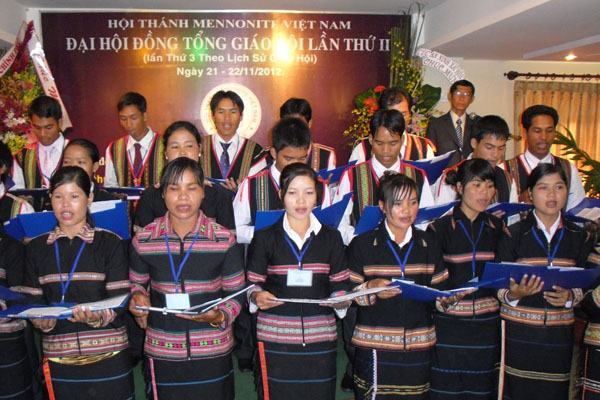
After 1975, the EMBM and MCC's foreign clergymen and staff returned to their countries. The only Vietnamese pastor, Mr. Tran Xuan Quang, had gone to Taiwan to attend a religious conference in March 1975 and had not returned to Vietnam. The Mennonite religious and social establishments were later donated to social charity activities. The base in Binh Thanh, Ho Chi Minh City, existed till June 1978 under the instruction of the evangelist Nguyen Quang Trung.
In 1981, the MCC returned to Vietnam and renewed their charitable relief activities here. This time, apart from providing urgent relief, MCC has also carried out projects relating to health, education, disabled children and the development of agriculture, forestry and technology. In 1991, MCC received the Vietnamese Government's permission to set up a representative office in Vietnam.
Recently, the Mennonites have developed their missionary work in new areas. According to the Vietnam Government Committee for Religious Affairs, in 2006, the Mennonites had about 7 thousand believers and more than 90 foundations, which are mainly found in Ho Chi Minh City and the Central Highlands.
To implement the Ordinance on Beliefs and Religions dated February 5, 2009, the Vietnam Government Committee for Religious Affairs, on behalf of the Vietnamese Prime Minister, adopted the Decision number 12/QD-TGCP to acknowledge the Vietnamese Mennonites Church headed by Pastor Nguyen Van Quang and headquartered at 67/107 Bui Dinh Tuy Road, Binh Thanh District, Ho Chi Minh City, as a legal organization. Its motto in the new period reads: "Worship the Trinity, love everyone as God's teachings in the Bible, live the Gospel, serve God and the Fatherland, and be with the Nation."
Christian Alliance and Some Other Protestant Sects
Apart from the afore-mentioned Protestant sects that had entered South Vietnam for evangelizing and establishing their foundations, by 1975, many other Protestant sects had been formed such as the Vietnam Christian Fellowship Church, the Presbyterian Church, the Christian Church and Jehovah's Witnesses.
Vietnam Christian Fellowship Church
The Vietnam Christian Fellowship Church was officially recognized by the Sai Gon Government in 1974. It origin can be traced back to the Vietnam General Confederation of Evangelical Churches (Southern Region), following a disagreement between Pastor Hoang Kim Thanh and the General Confederation. However, it remained relatively inactive after 1975 and did not renew its activities until the 1980s. Since then, it has expanded its evangelization and increased its number of followers by joining the Protestant group led by Pastor Dinh Thien Tu, a former pastor of the Vietnam General Federation of Evangelical Churches (South Vietnam) who had followed Pentecostalism.
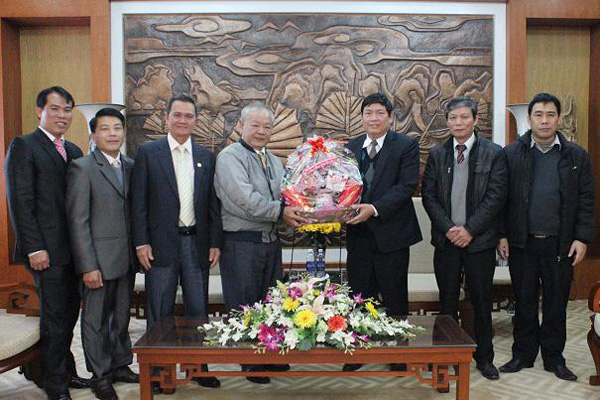
After separating itself from the Vietnam General Federation of Evangelical Churches (South Vietnam) and following Pentecostalism, the Vietnam Christian Fellowship Church considered itself as having both traditional Protestant and Pentecostal beliefs. It does not prevent its followers from speaking their native languages but discouraged them from doing so in public. According to its report, in 2007, the Vietnam Christian Fellowship Church had about 250,000 followers in 60 out of 64 provinces and cities throughout the country. On October 5, 2007, it received the License number 844/GCN-TGCP from the Vietnam Government Committee for Religious Affairs for its activities. In August 2009, it held a general congress and was preparing the administrative formalities for being officially recognized as a legal organization by the Vietnamese Government. Its motto reads: "Be loyal to and worship the Trinity according to the standards set in the Bible and be loyal to the Fatherland."
Presbyterian Church
The Presbyterian Church was first introduced into Vietnam in 1968 and was officially recognized by the Sai Gon Government in 1972. Its first general congress was held in 1973, and Pastor Nguyen Xuan Bao was appointed as its head. In recent years, it has attracted great numbers of followers. According to its report, in 2007, it had approximately 6,000 followers in 14 provinces and cities. On December 4, 2008, the Vietnam Government Committee for Religious Affairs, on behalf of the Vietnamese Prime Minister, adopted the Decision number 234/QD-TGCP recognizing the Vietnam Presbyterian Church headed by Pastor Nguyen Ba Nha and temporarily headquartered at C4/18 Bis Pham Hung Road, Binh Chanh District, Ho Chi Minh City, as a legal organization. Its motto in the new period reads: "Wholeheartedly worship the Trinity, respect God, love people, serve God and the Nation, and obey the law."
Christian Church
The Christian Church (Disciples of Christ) first entered Vietnam in 1963 under the direction of an American pastor called Ralph S. Burcham. Its missionary works were closely tied to social activities, especially those connected with orphans and educational activities. In 1968, it was officially recognized by the Sai Gon Government. Since the liberation of South Vietnam, it has maintained its normal activities despite no increase in followers.
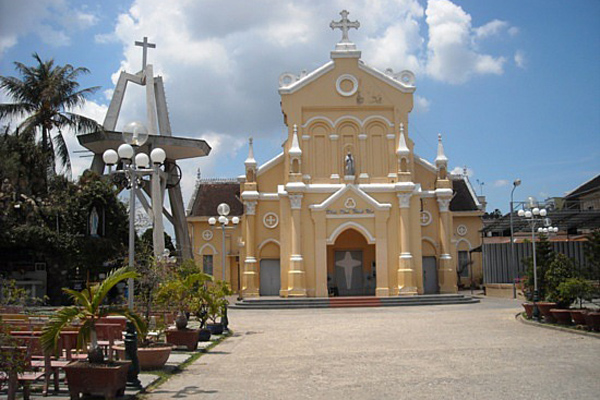
Jehovah's Witnesses
The exact time of Jehovah's Witnesses entering Vietnam has not been confirmed in any documentation. According to some researchers, the Watch Tower Bible and Tract Society of Pennsylvania, part of Jehovah's Witnesses, entered and started their missionary activities in South Vietnam in the mid 1960s in the form of advertising the magazine Watch Tower. On March 5, 1973, the Sai Gon Government's Home Office signed the Document number 1051/BNV/KS/14-B approving its executive board, which included three members and was chaired by Robert Gwynn Savage. It was headquartered at 90E Ly Tran Quan Road, Sai Gon.
Although it had been supported by the organization of Jehovah's Witnesses in the United States of America and its regional branches in Taiwan and the Philippines, Jehovah's Witnesses was not recognized by other Protestant sects and found it hard to attract followers. It was perhaps due to its different theological tendency, organizational structure and religious practices. As a result, by 1975, it had only approximately 100 followers.
Before 1975, there were also many other religious organizations for specific purposes that gave direct support to the popularization of Protestantism. They included the United Bible Society, the Summer Institute of Linguistics (SIL), the World Wide Evangelization Crusade (WEC), the United World Mission (UWM), the Salvation Army, the Osborn Foundation (OF), the Campus Crusade for Christ (CCC), the Gedeou Mission, the Indochinese Mission (also known as the Navigators' Society) and the Overseas Crusade. After the liberation of South Vietnam, some of them returned to Vietnam to renew their activities while others just came back to visit.
In recent years, Vietnam has promoted industrialization, modernization, and international cooperation and exchanges. Protestantism has been known as a free religion in organization. These are among the reasons for the appearance of new Protestant organizations and groups in Vietnam. They are established, imported from other countries or separated from the former Protestant sects. They are all small with a scattered distribution and unstable with various names. Particularly, the newly-established Protestant groups often carry out their religious activities within families, so they are popularly known as "private Protestantism." Here are some typical Protestant groups and sects:
- Evangelistic organizations: the Vietnam Baptist Mission, the Vietnam Federation of Baptist Missions, the Federation of Evangelical Churches, the Evangelical Federation of Vietnam, the Evangelical Society, the Evangelical Federation and the Vietnam Protestant Mission.
- Baptist groups: the Baptist Federation, the Baptist Fellowship Church, the Christian Baptist Church and the Independent Baptist Church.
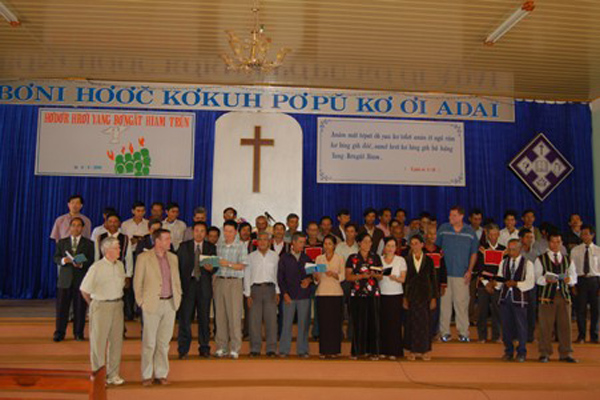
Since there are so many Protestant organizations and sects in Vietnam, some of which even intermingle with each other, it is hard to provide exact statistics of Protestant followers in general and those in each sect in particular. According to the statistics of the Vietnam Government Committee for Religious Affairs, which was mainly synthesized from the reports of Protestant organizations, in 2008, the Vietnam General Federation of Evangelical Churches (South Vietnam) had about 800,000 followers; the Vietnam General Federation of Evangelical Churches (North Vietnam) had approximately 100,000 followers; the other Protestant sects had about 400,000 followers. In total, there was an estimated 1.3-1.5 million Protestant followers in Vietnam that year.

